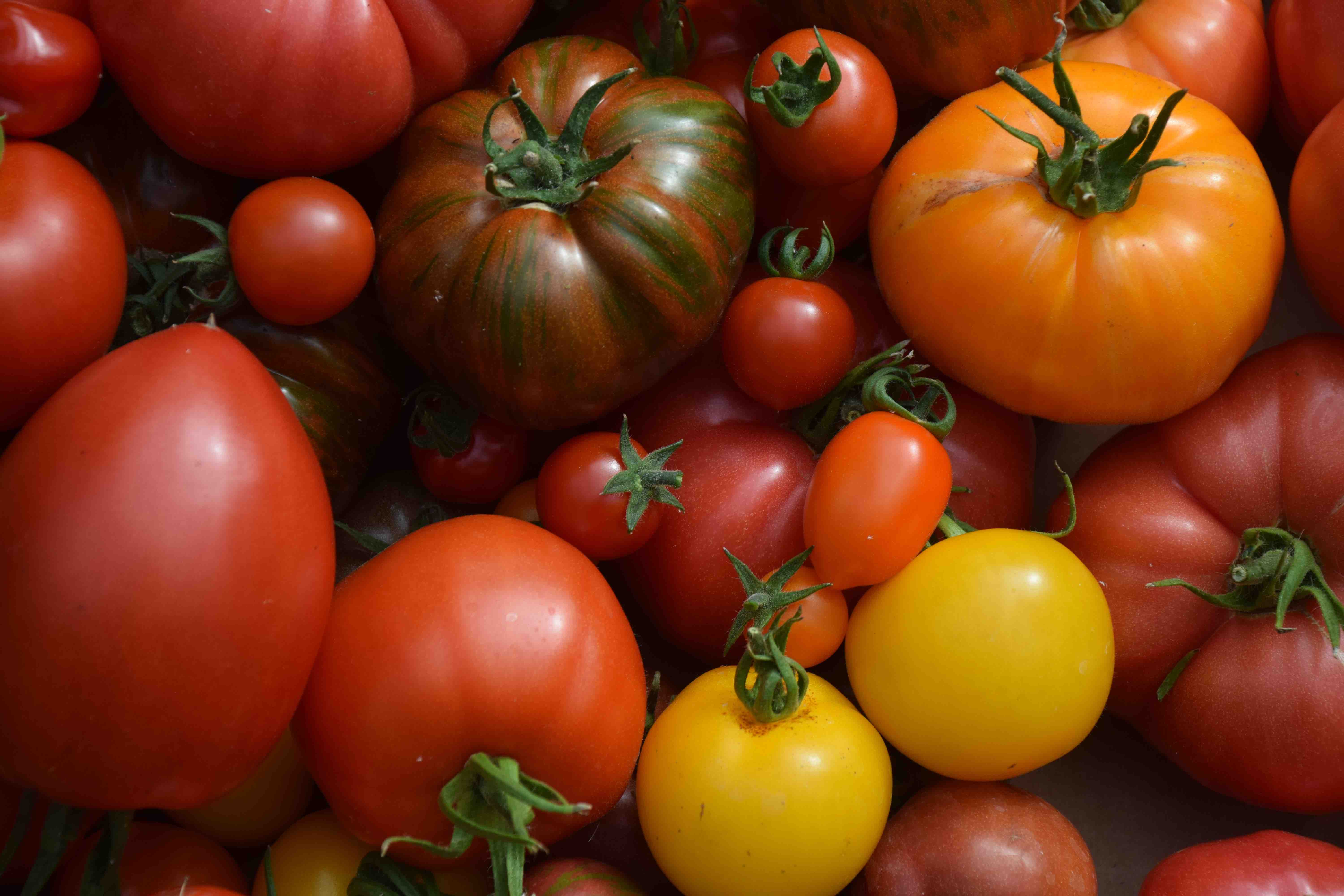
The recent shortages of salad crops in supermarkets has sparked renewed interest in growing your own. Growing tomatoes is on everyone’s mind. Lots of us grow tomatoes already and we know that you can’t really grow tomatoes to pick anytime except in mid- late summer. That doesn’t bother me because I cook and freeze my surplus, make chutney and just don’t eat fresh tomatoes unless I can eat my own. Supermarket tomatoes, out of season, are not a patch on home grown and I can eat other things, though not necessarily turnips!
So don’t expect to be picking tomatoes all year if you grow your own, the plants are killed by frost and the fruit won’t ripen unless it is warm. But you can pick your own from July to October.
I have seen a lot of nonsense being spread about how to grow tomatoes so I am going to go back to basics and I hope to include all you need to know to grow a good crop. My apologies to experienced gardeners if I am stating what seems like the obvious!
Where to grow them
Tomatoes are frost-tender so cannot be planted outside until after the last frost. This is difficult to gauge but in most gardens will be mid May. It will be earlier win coastal areas or in towns. You can grow tomatoes outside, either in pots, growing bags or the soil, but they prefer a sunny, sheltered spot. They will also be vulnerable to blight, the same disease that affects potatoes, that strikes in warm, wet weather, usually after late July. It kills the plants. There are blight-resistant tomatoes, including ‘Fandango’, ‘Fantasio’, ‘Ferline’, ‘Legend’ and ‘Latah’.
To produce an earlier crop and to avoid blight it is worth growing tomatoes under cover. This is either in a greenhouse or polytunnel. You can buy a small, plastic greenhouse big enough for three or six plants to put on the patio. These are usually rather flimsy and are best taken apart and stored in winter to prevent storm damage but they will improve your success enormously.
I would not suggest growing them in the house because it is too dark, even on the windowsill.
What to grow them in
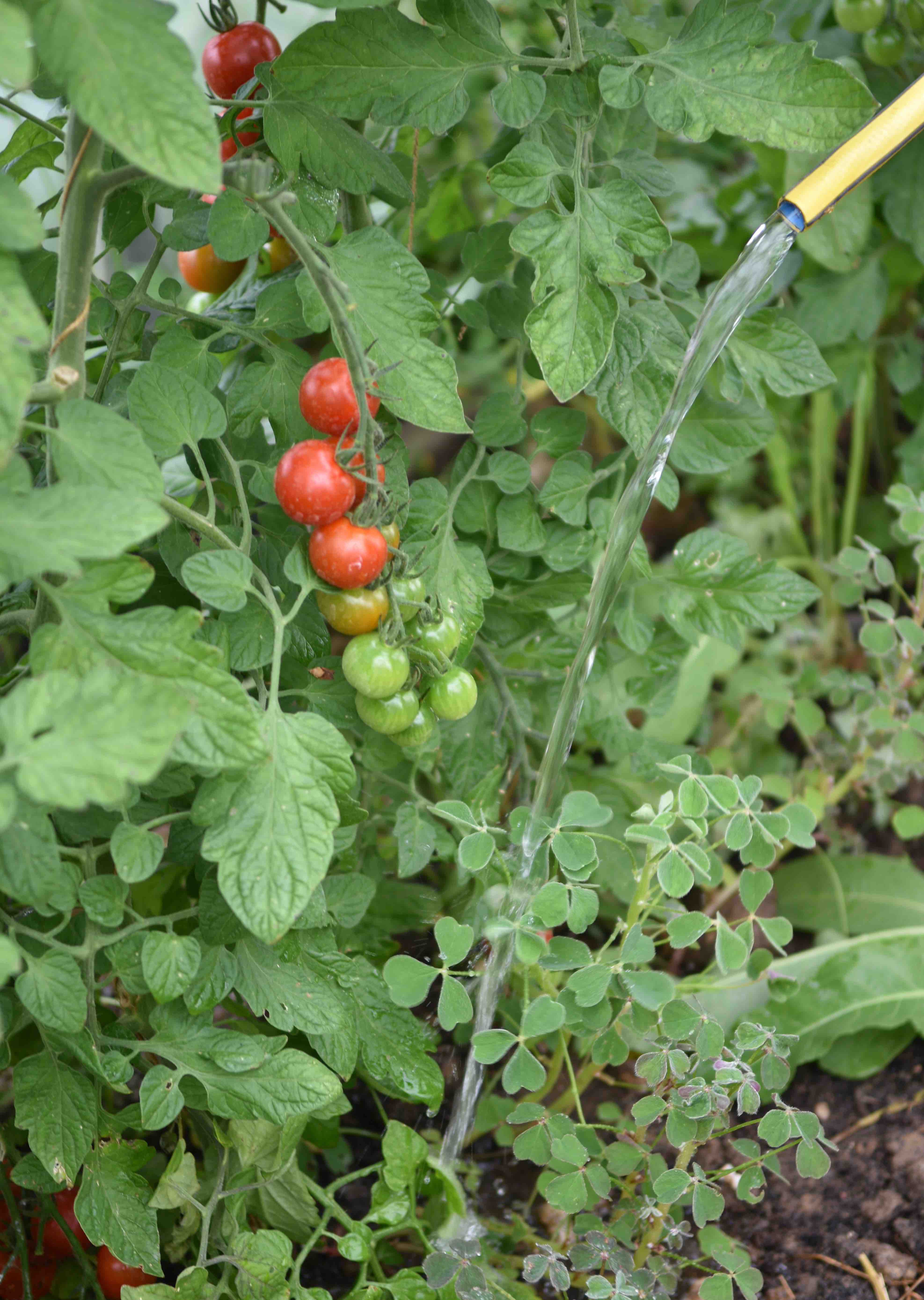
Tomatoes are basically very easy to please and are not fussy about soil. But it always pays to improve the soil with lots of compost before planting. Most ordinary garden soil is OK, even chalk soils. You can also grow them in pots or growing bags but then you must pay attention to watering and feeding. It is vital to feed every week with tomato fertiliser as soon as the first flowers appear. When the plants are fully grown they are very thirsty and if they dry out, the ends of the fruits turn black (blossom-end rot). To help avoid that only put two plants in each growing bag or use large (at least 25cm deep and wide) pots so there is plenty of water-retaining compost.
Types of tomatoes
You can classify tomatoes in various ways: by colour, by fruit size or shape and by use, even leaf shape. But for the gardener, rather than the cook, it is important to know the shape of your tomato plant.
Most varieties are what we call cordon or indeterminate. The latter is useful because it describes the growth of the plant. The main stem grows on and on indefinitely and at the base of each leaf a new shoot grows that also branches. In time you end up with a huge, straggly mess. Indeterminate tomatoes can have huge or small fruits in all colours. To control growth, and to encourage early, good fruit, we train them. We tie them to a cane, or similar, and remove the side shoots as soon as they are big enough to see.
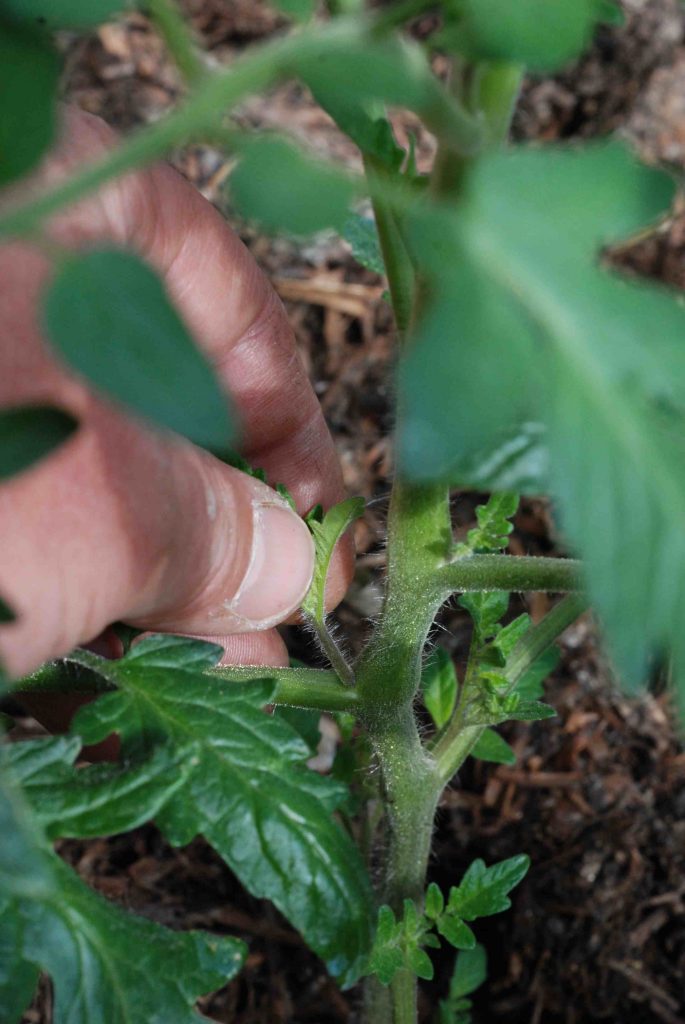
These plants will produce four or five trusses (clusters) of flowers and fruits in an average season.
In contrast to this are bush or determinate kinds. These are low and spreading and every shoot ends with a cluster of flowers – so the shoot is short. But the side shoots then grow and each of these ends in a cluster of flowers – and so on. So plants are low and need no support. They are ideal for window boxes or hanging baskets. There are two main disadvantages. The range of fruit size is limited – most are small, and their fruit may be touching the soil. But they crop quickly, ripen early and are easy to grow. They tend to crop over a shorter period. They are useful to grow in the veg bed under cloches (or fleece tunnel) which will keep them growing well and protect them from blight. Spread straw under the plants to keep the fruit clean.
Where to start
You can start with seeds or plants. Nags Hall have lots of tomato seeds for sale now and will have plants ready to buy when you need them.
Buying plants is simpler and you know how many plants you have. You will be a bit restricted as to varieties. Remember that you can’t plant them outside till mid May. You can usually plant in a cold greenhouse in late April but be prepared to cover the plants with newspaper or fleece on frosty nights to protect them.
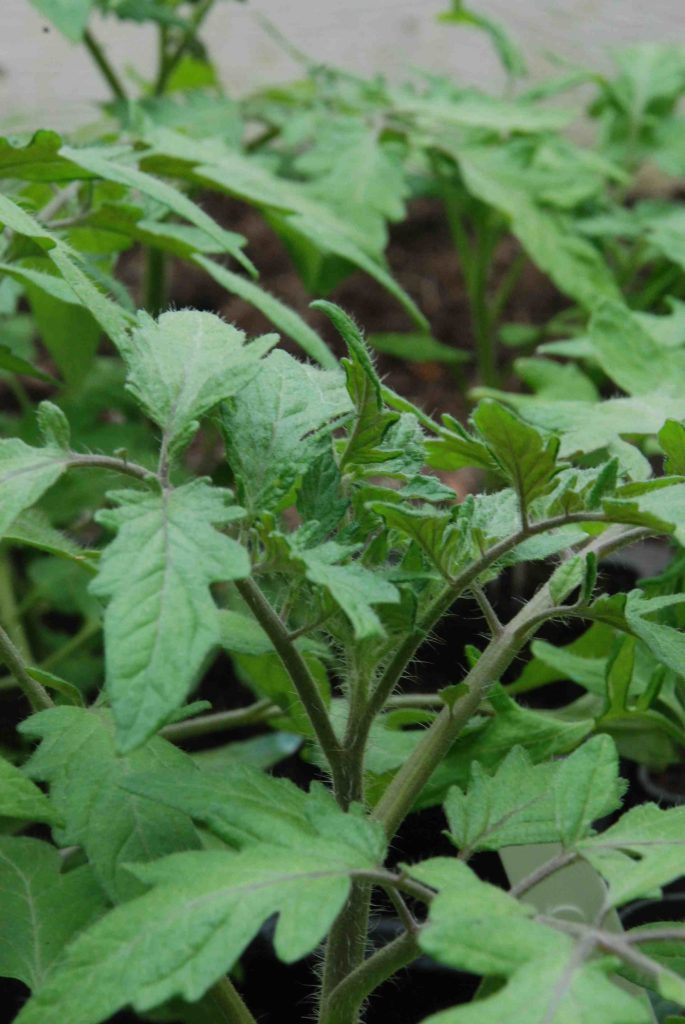
I grow from seed so I can grow the kinds I want. I usually sow in mid- late March. I plant out in early May (in a poly tunnel) and I have my first ripe tomatoes in mid July – usually.
But how early you get fruit depends a lot on the variety. In general, small, cherry tomatoes ripen earliest. Large, beefsteak toms won’t ripen till late August. Paste tomatoes are similar but that doesn’t matter because they are for cooking anyway.
I hesitate to suggest what variety you grow but orange ‘Sungold’ is sure to please, as is ‘Sweet Million’.
When buying seeds you will see that some are F1 hybrids. Without getting into the technicalities, these are usually bred for commercial growers and are worth the extra expense because they are reliable, early and heavy cropping. Most are best grown under cover. `Don’t be alarmed at their price – you often only get 6-10 seeds per pack. But you don’t need hundreds of plants and 10 plants is usually all you need. If you only use part of the pack, tomato seeds store well and will germinate even if a few years old so you can save the spares.
Growing from seed
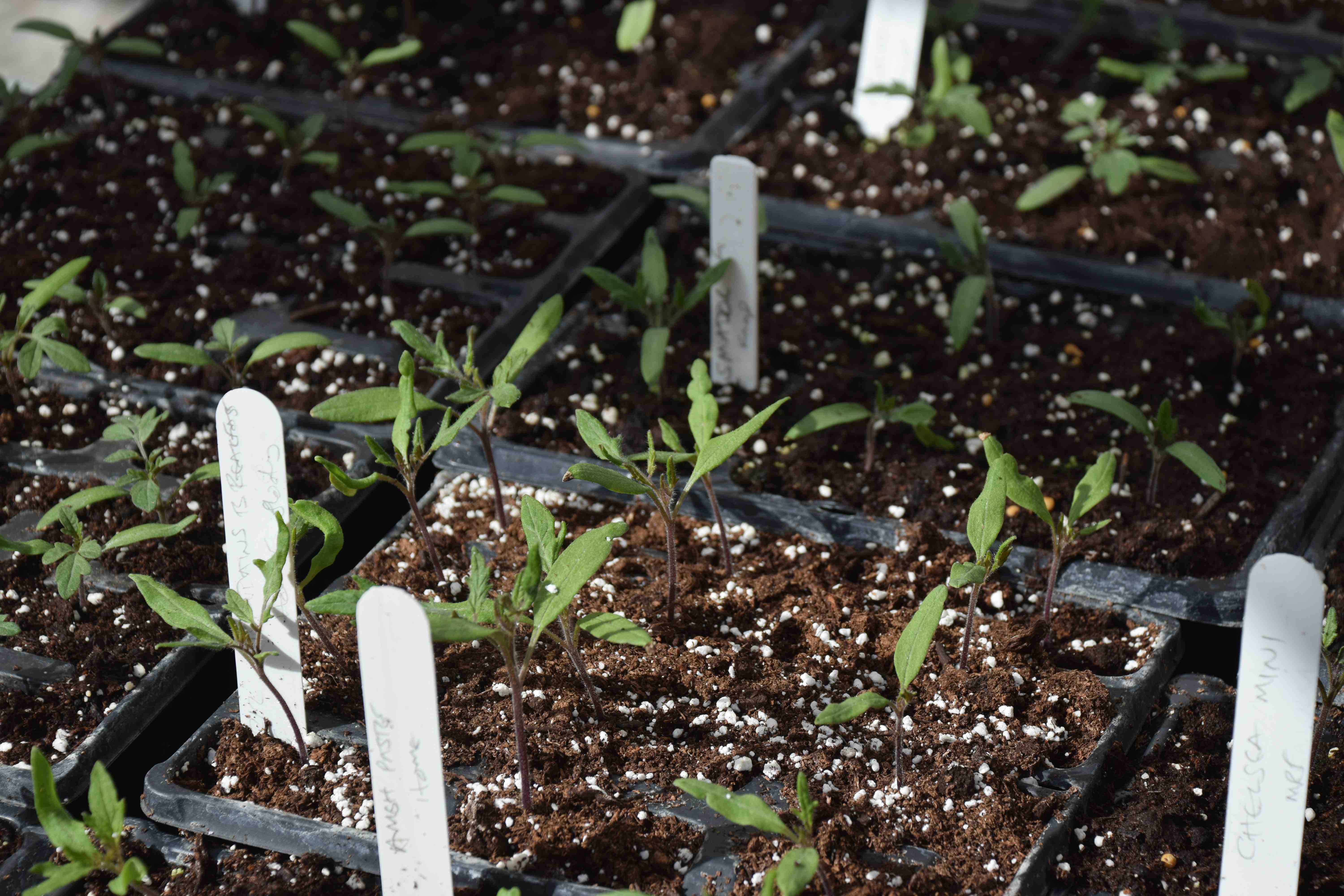
Tomatoes can be grown in the same way as any annual bedding plants. Briefly:
Fill trays or a pot with fresh, multipurpose compost and gently firm by tapping the pot
Water well by standing the pot in a tray of compost or watering with a can and rose (sprinkler). Use tap water
Allow to stand and drain
Sow thinly over the surface and cover lightly with compost or perlite
Put in a warm place (ideally around 21c). Do not cover with paper to exclude light.
When seedlings emerge (about 10-14 days) make sure the seedlings have good light
Transplant into cell trays or small pots about a week later when the seed leaves have expanded fully.
Grow on in warmth and good light.
The plants are best planted out when you see the first truss of flower buds in the tip of the plant. Keep them growing sturdily in good light and not too hot, so they don’t get straggly and need support. But tomatoes are very adaptable and even straggly plants will recover if they are not in perfect condition.